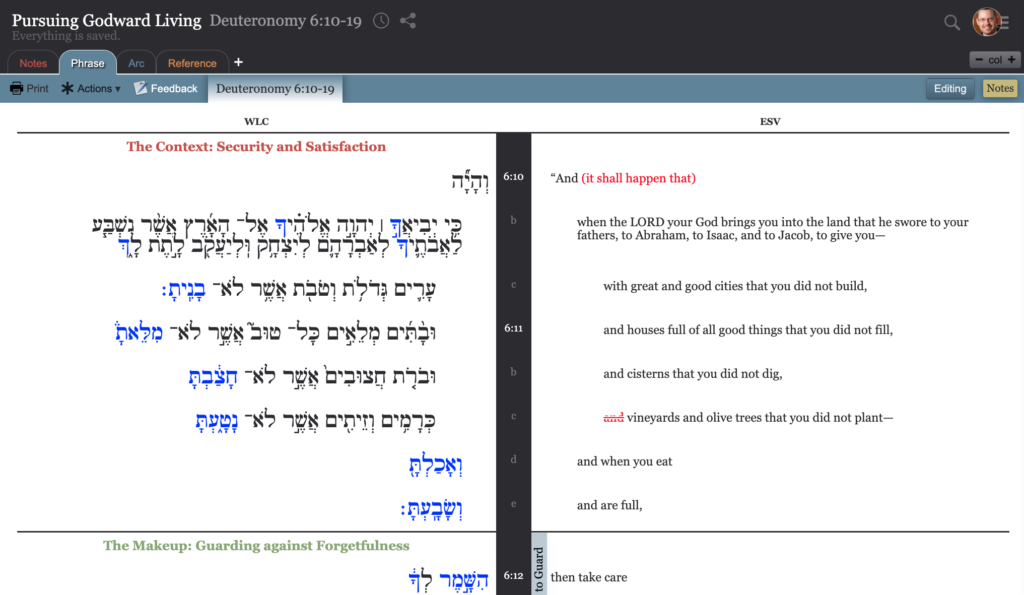Biblearc.com is my top tool for visually tracking a biblical author’s flow-of-thought in order to determine a text’s boundaries, structure, and main idea. I use Biblearc.com’s phrasing module to create what I call a TEXT HIERARCHY of the thought-flow, and then I use the arcing module to visually identify the SEMANTIC RELATIONSHIPS between each of the clauses/propositions. I address my approach and these tools in three chapters within How to Understand and Apply the Old Testament:
- Chapter 2: “Literary Units and Text Hierarchy”
- Chapter 5: “Clause and Text Grammar”
- Chapter 6: “Argument-Tracing”
The concept of Text Hierarchy grew out of my doctoral dissertation titled A Call to Covenant Love: Text Grammar and Literary Structure in Deuteronomy 5–11 (Gorgias, 2007). In this study I grew to recognize how the biblical authors use the Hebrew connector waw (often a coordinating conjunction) and asyndeton (i.e., the absence of any connection) to signal macro-structure within Hebrew prose. As a way of aiding my analysis, I generated text-hierarchies, which visually identify subordination and coordination in ways that highlight primary and supportive thought-lines. By creating a text hierarchy, the interpreter can demonstrate where units of text begin and end and which elements within that text are of greater significance than others from a grammatical perspective. The benefit of this method is that since it is a linguistic approach, it removes much of the guesswork when determining a passage’s main point, flow of thought, boundaries, and so on.
I recently gave a 50 minute guided discussion on this topic at Biblearc.com‘s Facebook Live page. For those wanting to learn how to create a text hierarchy in English or Hebrew, I encourage you to check out the video here. For PDFs of my Text Hierarchy and exegetical outline of Deuteronomy 6:10–19, follow this link.
//Video/PDF// Deuteronomy 6:10–19 Text Hierarchy and Outline







